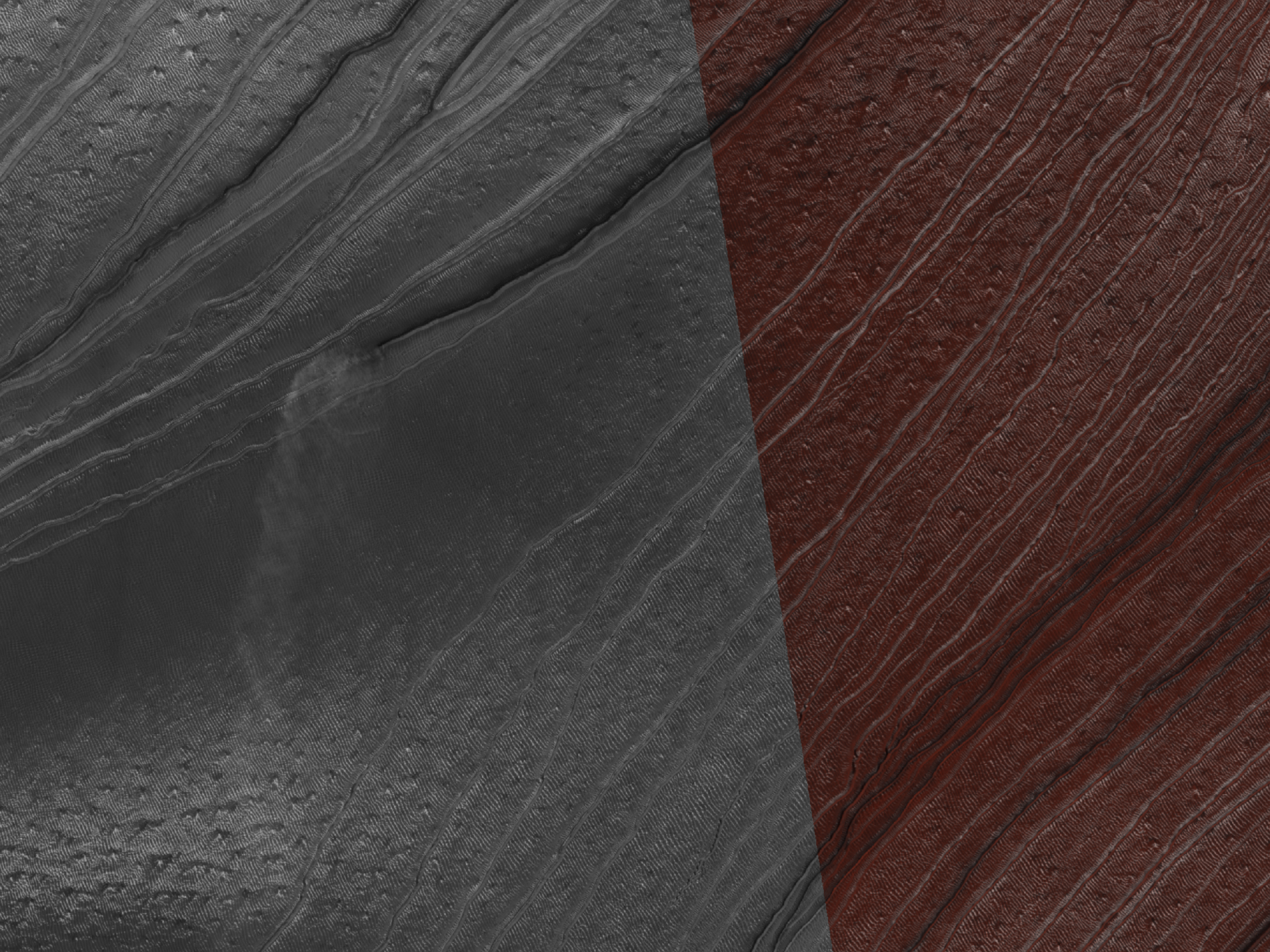Russell Crater hosts a large dune field. In the spring, carbon dioxide ice on the gently sloping side of the dune sublimates (evaporates) first, leaving a warm sandy slope.
At the crest of the dune alcoves harbor ice longer, which then breaks off in large chunks and slides down, forming linear gullies. Sometimes the sliding ice block leaves a cloud of dust,
as we see in this image.
ID:
ESP_082249_1255date: 12 February 2024
altitude: 252 km
https://uahirise.org/hipod/ESP_082249_1255
NASA/JPL-Caltech/University of Arizona
#Mars #science #NASA
